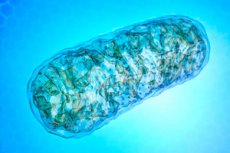
12 May 2024, 15:00
于韦斯屈莱大学的研究人员发现,疱疹病毒感染会改变宿主细胞线粒体的结构和正常功能。这些新发现将有助于理解疱疹病毒与宿主细胞之间的相互作用。所获得的知识可用于开发病毒性疾病的治疗方法。
疱疹病毒不仅会导致严重疾病,也是溶瘤疗法的有希望的候选对象。HSV-1感染依赖于核DNA的复制、转录机制以及宿主细胞线粒体的代谢。于韦斯屈莱大学生物与环境科学系副教授Maija Vihinen-Ranta及其研究小组研究了HSV-1感染从早期到晚期过程中线粒体的随时间变化。
关于疱疹病毒与宿主细胞相互作用的新数据
最近的研究表明,感染会导致编码参与线粒体网络(例如呼吸链、细胞凋亡和线粒体结构组织)的蛋白质基因发生显著的转录修饰。研究结果表明,线粒体的结构和功能发生了显著变化,包括线粒体形态和分布的变化、嵴增厚和缩短、线粒体与内质网之间接触点数量和面积的增加,以及线粒体钙离子含量和质子漏出的增加。——我们的研究结果揭示了感染进展如何将平衡从健康细胞转移到患病细胞,并导致线粒体稳态的严重紊乱。于韦斯屈莱大学副教授Maija Vihinen-Ranta表示,这可能为疱疹病毒与宿主细胞之间的相互作用提供更多见解。她继续说道,这些知识可用于开发病毒性疾病的治疗方法。
研究结果发表在《PLOS》杂志上

